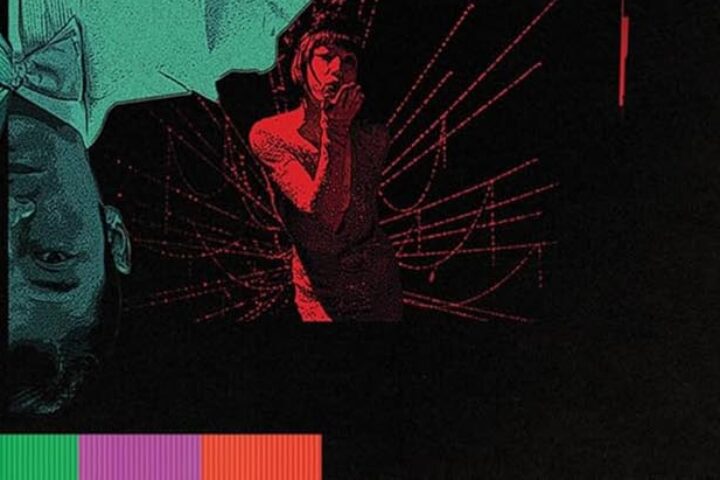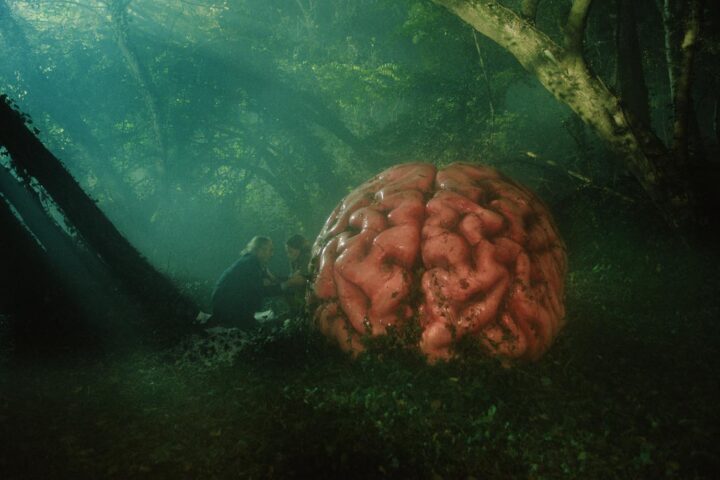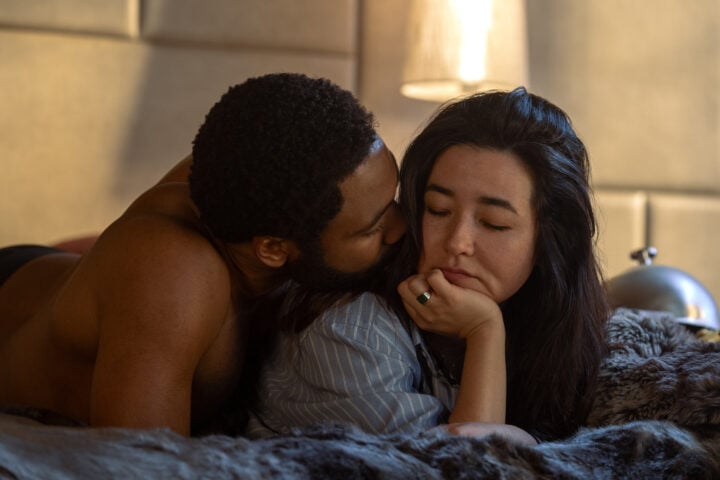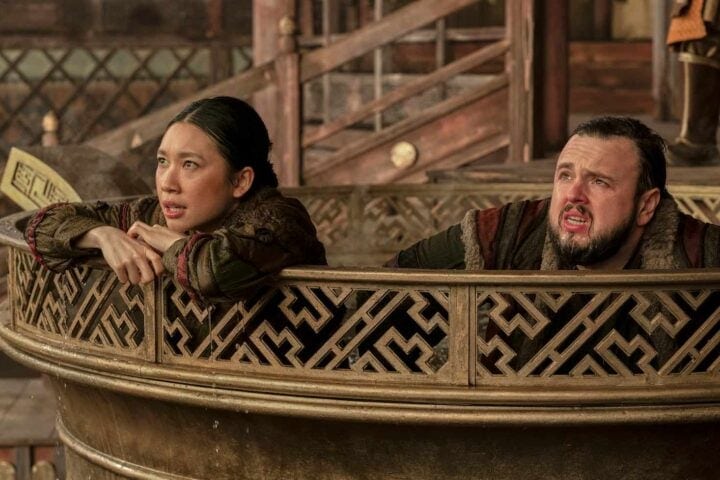Showrunners Rachel Kondo and Justin Marks take on the formidable challenge of turning James Clavell’s densely packed novel Shōgun into a 10-part miniseries, and the sheer heft of the material can be felt from the start of the first episode. The year is 1600 and the current heir to Japan’s throne is too young to lay claim to it, leaving a council of five regents to run the country in the meantime. This alone presents a complicated web of alliances, debts, and vendettas—not only between the regents themselves, but between their various heirs and allies.
The Portuguese are the first to reach Japan at this point in history, providing the Western nation with a monopoly on trade with the region and the opportunity to convert Japanese citizens to Catholicism, including a couple of the regents. An English sailor, John Blackthorne (Cosmo Jarvis), has taken to the sea in hopes of finding the elusive route to Japan and breaking the Portuguese stranglehold on it, losing his ship and crew along the way.
Alone in a foreign land, surrounded by strangers he can’t comprehend (the Japanese) and sworn enemies who he understands all too well (the Catholics), Blackthorne’s fate looks grim. Roaring madly about those “damned papists” and ripping off verbose insults in a throaty English accent, Jarvis bears a striking resemblance to Tom Hardy and has a similar knack for alternately playing his character as a bellowing beast of a man and a kind of soft-eyed gentleman-rogue.
Blackthorne’s fortunes shift when one of the regents, Lord Toranaga (Sanada Hiroyuki), takes him on as an advisor. Playing a serenely dangerous patriarch similar to his character from last year’s John Wick: Chapter 4, Sanada provides the perfect counterbalance to Jarvis’s blustering Blackthorne. There’s a stillness to Toranaga, and a steeliness to his gaze that makes it impossible to predict whether he’s about to offer a wry smile or a death sentence.
The other four rulers have united against Toranaga and, as war looks increasingly likely, the wily Toranaga believes that Blackthorne’s knowledge of Western warfare may present him with a tactical advantage. This is the event which sets the series in motion, allowing its plot to play out on two levels: the grand-scale depiction of Toranaga’s conflict and the more intimate account of Blackthorne as he slowly finds a place for himself in his new country.
Caught between these two men is perhaps Shōgun’s most complex figure, Toda Mariko (Anna Sawai). Both a converted Catholic and a loyal servant of Toranaga, she acts as a translator between her boss and Blackthorne. The three of them form a triangle through which the series explores competing ideas of faith and loyalty, duty and freedom, sacrifice and surrender. Kondo and Marks explore these weighty ideas in a thoughtful way, allowing Mariko, Blackthorne, and Toranaga to feel like fully formed human beings rather than just avatars of differing worldviews.
Upon first washing up in Japan, Blackthorne is astonished by the practice of seppuku, the gory form of ritualistic suicide employed by samurai. He sees brave warriors choosing to plunge a sword into their own bellies to avoid a “dishonorable” death and other men ordered to take their own lives in recompense for seemingly minor offenses. To him it seems an impossibly callous approach to human life, and even Toranaga resignedly admits that he’s “tired of all this pointless death” after seeing another of his compatriots forced to give up their life over an insult.
“Death is in our air and sea and earth,” Mariko tells Blackthorne, suggesting that the Japanese attitude toward it has been shaped by life in a land filled with earthquakes, tsunamis, and fires. And the more time he spends in Japan, the more Blackthorne—a reckless motormouth when we first encounter him—can see the value in a way of life in which each act that a person performs and each word they speak must be considered a matter of life and death. There are moments in which Shōgun falters in its attempts reckon with these differing views of mortality in a balanced way—one devastating death is later retconned in a fashion that robs it of its meaning in order to keep the main characters’ hands clean—but for the most part it creates poignant subtexts.
This morbid central theme of death’s ubiquity is conveyed not only in contemplative, cross-cultural conversations, but also through the show’s depiction of violence. Fight scenes aren’t plentiful in Shōgun, but the violence is sudden and shocking when it does arrive. Whether it’s a katana whipping off a head, the point of an arrow exploding through a neck, or the obliterating fire of a cannon, the action always underlines the sense of how quickly and easily an entire human life can be snuffed out.
The visceral quality to the show’s violence can be exciting or horrifying, sometimes both, but Shōgun never spills blood just for the sake of shocking us. At one point, we’re told about an incidence of seppuku in which the “second” (the person tasked with decapitating the disemboweled samurai, so as to ensure a quick death) required nine attempts to separate the head from its body. The anecdote is delivered in a way that’s both sad and darkly funny, but, tellingly, this is one of the few times that the act isn’t shown on screen.
The decision to use Mariko and Toranaga as central characters alongside Blackthorne, who was the sole protagonist of both the book and the acclaimed 1980 TV adaptation, is an effective way to avoid the “white savior” tropes that the tale dances with. And it’s ultimately the thing that makes this Shōgun more than another elegantly staged historical drama, using three distinct perspectives to turn it into a rumination on life and death.
Since 2001, we've brought you uncompromising, candid takes on the world of film, music, television, video games, theater, and more. Independently owned and operated publications like Slant have been hit hard in recent years, but we’re committed to keeping our content free and accessible—meaning no paywalls or fees.
If you like what we do, please consider subscribing to our Patreon or making a donation.






The original wasn’t really an example of the ws trope. The very end of the series should make it clear that jb was just a piece to be moved around by toranaga— the trope requires the ws to have agency that jb didn’t possess.
The book is surprisingly good history so hopefully things are added rather than simply changed.